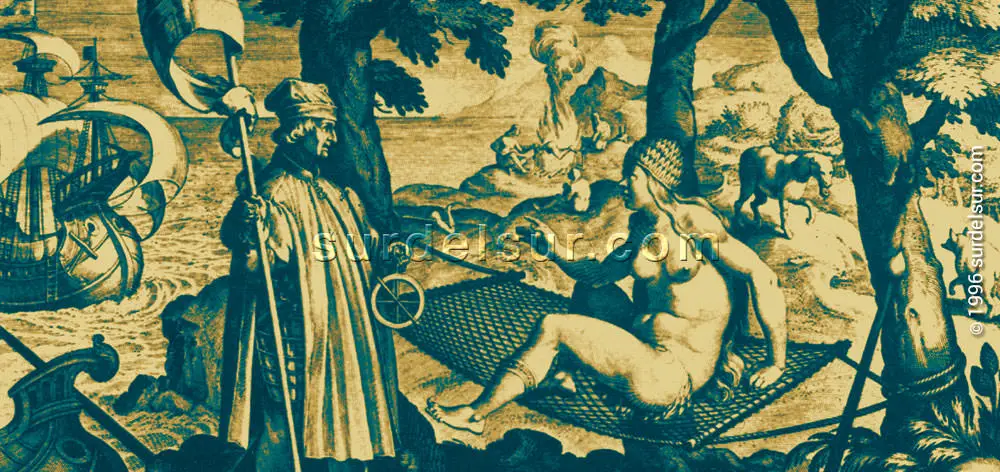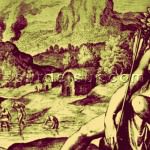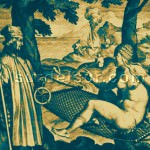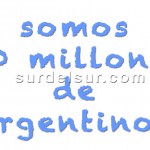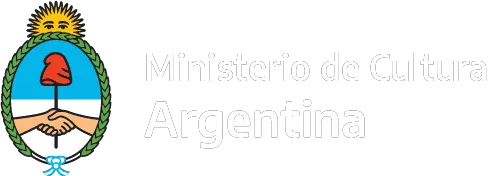Those white men were sometimes supreme beings coming from heaven to the natives. Gods, who brought in their baggage, progress but also syphilis and gunpowder. Spanish conquest and population took place from the sixteenth century to 1810 with the development of three streams settlers: the East, the North and West. Thirteen cities were founded. The European population grew from 2500 in 1700 to 6000 people in 1810, a total of 700,000.
Currents Spanish settlers
East populating movement
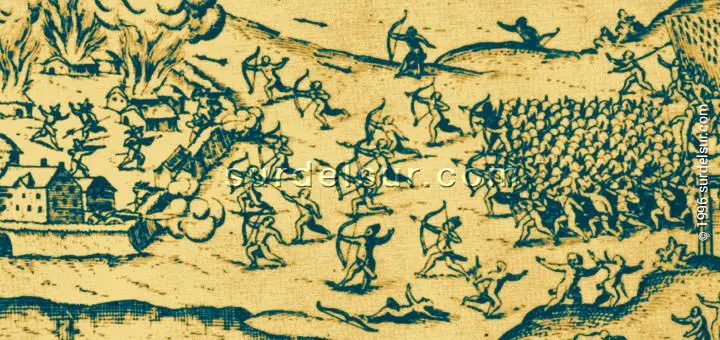
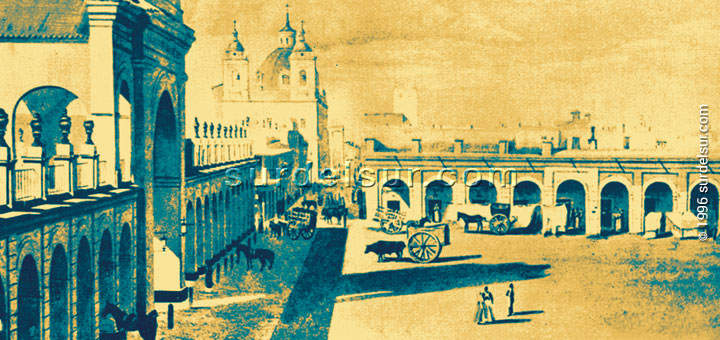
The Spanish conquest and population, came from Europe, and arrived by way of the Plata and Paraná Rivers. It was the most important one because of its continuity and the cities founded, such as Buenos Aires (1580), Asunción del Paraguay (1541), Santa Fe (1573), Corrientes (1588) and lately Paraná (1730).
This settler current from Spain founded the cities that by their importance constitute the main socio-economic conglomerate in the country.
North populating movement
It came down from Peru and arrived by way of the Quebrada de Humahuaca giving rise to the cities of Santiago del Estero (1553), San Miguel de Tucumán (1565), Córdoba (1573), Salta (1582), San Fernando del Valle de Catamarca (1583), La Rioja (1591) y San Salvador de Jujuy (1593).
Santiago del Estero is the oldest bastion of the Spanish conquest and population in Argentine territory, the settlement remained without interruption or change of place, so it is called “mother of cities”.
This current colonizing North coincides with the territories where indigenous peoples, with Inca influence developed.
Its main characteristic was an urban and cultural development with populational settlement and economic growth.
West populating movement
It came from Chile giving rise to the cities of Mendoza (1561), San Juan (1562) y San Luis (1596). But once the Viceroyalty of the Plata River was established, it began decaying as a population conglomerate.
The Spanish conquerors of this populating stream, coming from Chile through the Andes. For two centuries they kept close ties, with its Trans-Andean origin. This bond weakened with the establishment of the Viceroyalty of Rio de la Plata, and accelerated its integration into the national territory.
Population Planning
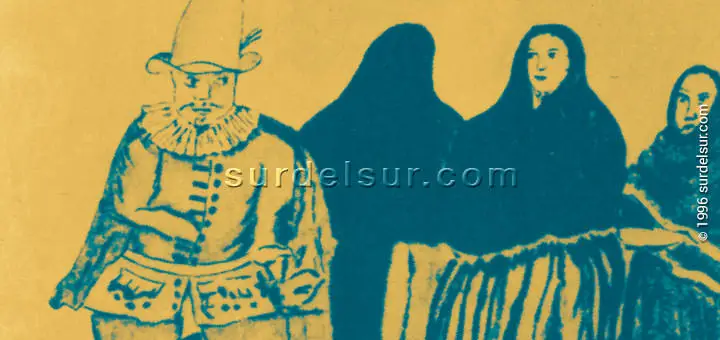

The planning of cities was based on communication and internal transportation works, with a demographic policy, which resulted in fairly homogeneous communities in terms of politics, race and religion.
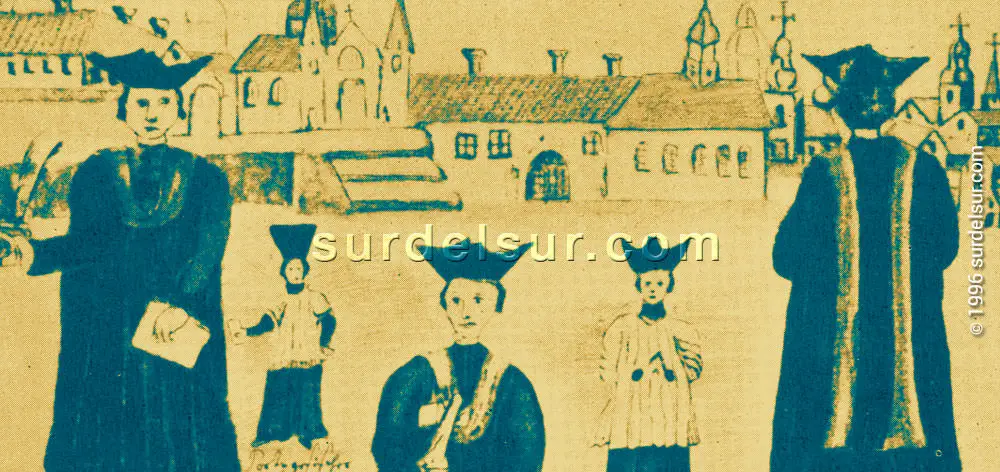
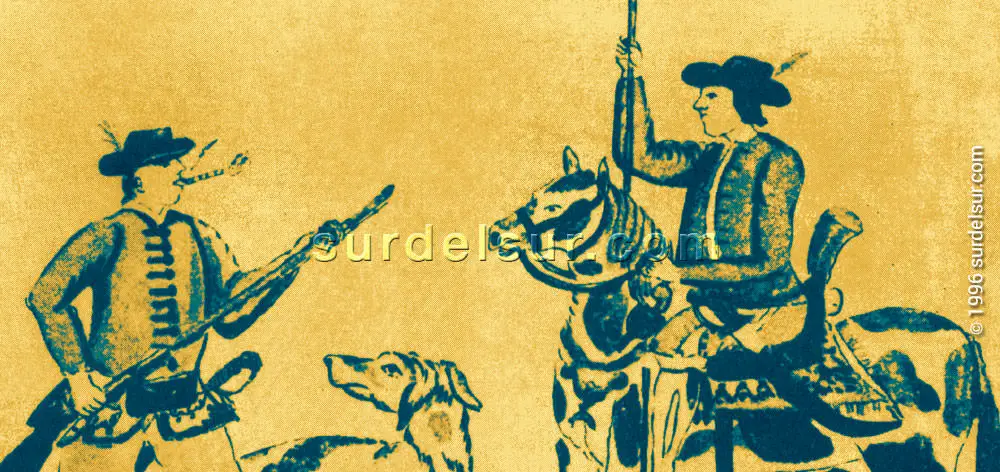
The Hispanic populations started to group together in the north and north-west of the territory, coincidentally with the settlement of Jesuitical and Franciscan missions. At the same time, in some cases the natives withdrew whereas in others they felt attracted to the colonial activities.
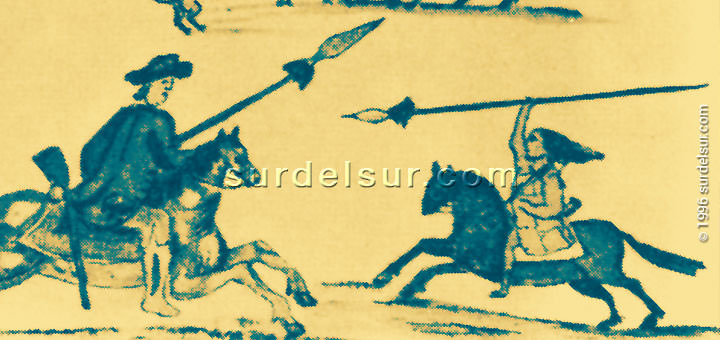

This assimilation also took place in the social terrain and originated the criollos, that is to say, crossbreeding. The more rebellious practiced the “malón” (sudden attack of territories occupied by white people) until the implementation of the “Desert Conquest”. The indigenous population was reduced by 25 per cent in the first century of Spanish domination.
Settlement Policy of Colonization
By 1700, there were about 2,500 Europeans in the Viceroyalty. By 1810, they already amounted to 6,000 over a population of 700,000 in the present national territory. Unlike the conquering process developed in the United States, based on the countryside, the Spaniards tended to urban colonization and left unoccupied territories in Chaco, Patagonia and Pampa, which had a decisive bearing on the demographic development.
References:
All graphic material in this report is edited digitally. The customized version by surdelsur.com shown on this page is performed based on the following documents:
- Schmidl Ulrico (Chronicler, Soldier, Traveller). (1510-1580). Indian attack to Buenos Aires, newly founded by Pedro de Mendoza [Engraving Detail]. Story of Ulrich Schmidl (1599), by Hulsius Levinus (Editor) (1546 to 1606). Nuremberg.
- Pellegrini, Charles Henri (Painter, Swiss). (1800-1875) Buenos Aires square with the old Recova [Lithography]. Historical Museum Brigadier General Cornelio de Saavedra, Buenos Aires, Argentina.
- Paucke, Florián (Jesuit missionary). (1719-1779):
Spanish soldiers of the colonial period [Drawing, detail].
Wear for nobility in the colonial period [Drawing, detail].
Clothing Spanish colonial period [Drawing, detail].
Jesuits with students [Drawing, detail].
Spanish Lancers in the fort [Drawing, detail].

